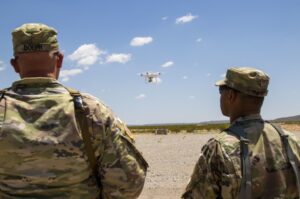
The Army’s Rapid Capabilities and Critical Technologies Office (RCCTO) is holding a live fire demonstration in April that will explore interest in industry’s potential to provide counter-small drone capabilities “as a service,” the office’s director said Wednesday. “For a long time, we bought particular products and we provided those to soldiers. That’s been the model for a long time and maybe it’s time to change that model a little bit. Maybe what we need to do is have a company…

 By
By 











